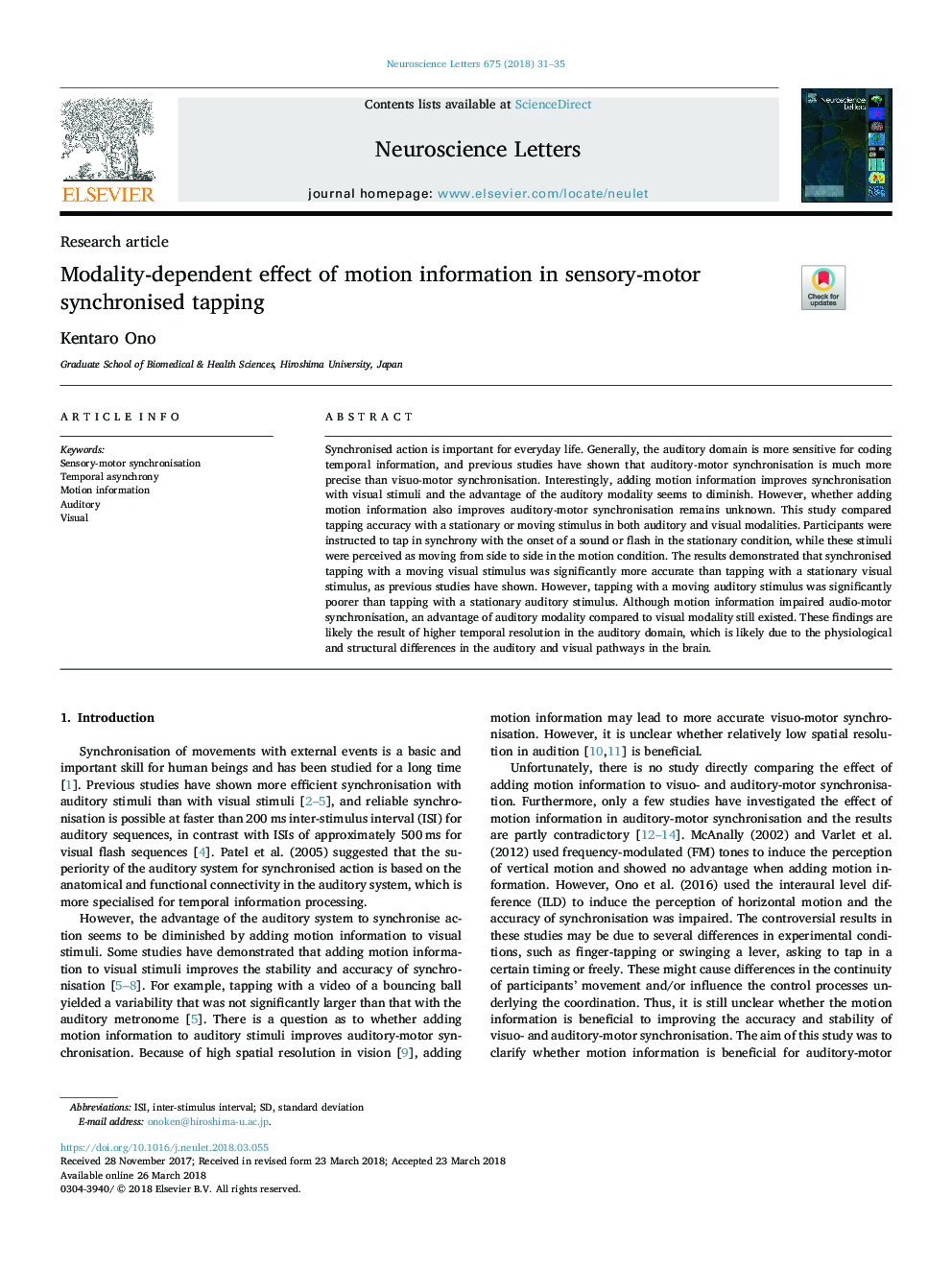| Article ID | Journal | Published Year | Pages | File Type |
|---|---|---|---|---|
| 8841526 | Neuroscience Letters | 2018 | 5 Pages |
Abstract
Synchronised action is important for everyday life. Generally, the auditory domain is more sensitive for coding temporal information, and previous studies have shown that auditory-motor synchronisation is much more precise than visuo-motor synchronisation. Interestingly, adding motion information improves synchronisation with visual stimuli and the advantage of the auditory modality seems to diminish. However, whether adding motion information also improves auditory-motor synchronisation remains unknown. This study compared tapping accuracy with a stationary or moving stimulus in both auditory and visual modalities. Participants were instructed to tap in synchrony with the onset of a sound or flash in the stationary condition, while these stimuli were perceived as moving from side to side in the motion condition. The results demonstrated that synchronised tapping with a moving visual stimulus was significantly more accurate than tapping with a stationary visual stimulus, as previous studies have shown. However, tapping with a moving auditory stimulus was significantly poorer than tapping with a stationary auditory stimulus. Although motion information impaired audio-motor synchronisation, an advantage of auditory modality compared to visual modality still existed. These findings are likely the result of higher temporal resolution in the auditory domain, which is likely due to the physiological and structural differences in the auditory and visual pathways in the brain.
Related Topics
Life Sciences
Neuroscience
Neuroscience (General)
Authors
Kentaro Ono,
